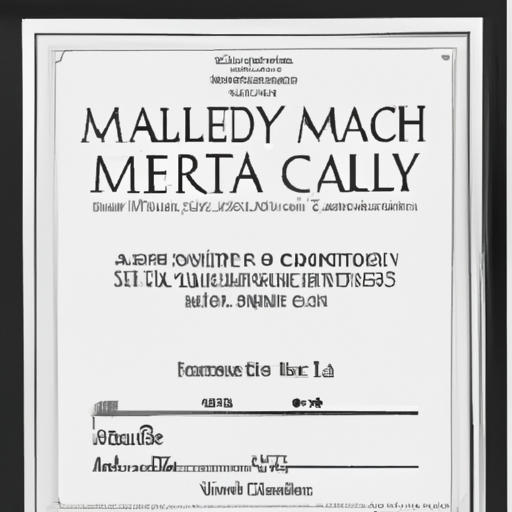
Introduction:

Learning how to read sheet music is a crucial skill for violin players. Sheet music provides a universal language that allows musicians to communicate and interpret musical compositions accurately. Whether you are a beginner or an experienced player, understanding sheet music is essential for improving your violin skills and expanding your repertoire. This guide will cover the basics of reading sheet music for violin players, including staff notation, note identification, rhythms, key signatures, time signatures, dynamics, and articulation. By the end of this guide, you will have the knowledge and skills to read sheet music confidently and play a wide range of musical pieces.

The Basics of Sheet Music:
Before diving into the specifics, it is important to understand the fundamentals of sheet music. The staff is the foundation of sheet music and consists of horizontal lines and spaces. Each line and space represents a different note. By learning the position of notes on the staff, you can identify and play the correct notes on your violin. Additionally, sheet music utilizes various symbols and notations to convey musical elements such as dynamics, articulation, and tempo. Familiarizing yourself with these symbols will enable you to accurately interpret and perform the music.
Positioning Your Violin:
Proper posture and hand placement are vital for violin players. Correct positioning ensures optimal sound production, prevents injuries, and allows for efficient movement across the fingerboard. When holding the violin, maintain a straight spine, relaxed shoulders, and a balanced chinrest and shoulder rest. Your left hand should form a natural arch, with the fingers curved and placed on the strings. The right hand, responsible for bowing, should hold the bow with a relaxed grip, allowing for smooth and controlled strokes.
Identifying Notes on the Violin:
The ability to identify notes on the violin is crucial for reading sheet music. Each string on the violin corresponds to a specific pitch, and knowing the fingering positions will help you locate and play the desired notes accurately. Additionally, understanding the relationship between the notes on the staff and the fingerboard allows for efficient sight-reading. By practicing note identification exercises, you can improve your ability to recognize and play notes confidently.
Identifying Rhythms:
Rhythm is an essential component of music, and learning how to read different types of rhythms is vital for violin players. By understanding the duration of notes and rests, you can accurately reproduce the intended rhythm of a piece. Counting beats and subdividing them will assist in playing rhythmic patterns accurately. By practicing rhythm exercises, you can enhance your rhythmic precision and develop a strong sense of timing.
Understanding Key Signatures:
Key signatures provide important information about the tonality of a piece. They indicate the key in which the music is written and the specific sharps or flats that may appear throughout the composition. By familiarizing yourself with key signatures, you can anticipate and prepare for the occurrence of certain notes or patterns. This knowledge will enhance your ability to read sheet music and navigate different keys effortlessly.
Time Signatures and Beats:
Time signatures indicate the organization of beats within a musical piece. They consist of two numbers stacked vertically, with the top number representing the number of beats per measure and the bottom number indicating the type of note that receives one beat. Understanding time signatures is crucial for maintaining a consistent tempo and rhythm while playing. By practicing counting beats in different time signatures, you can develop a strong internal pulse and improve your overall sense of timing.
Dynamics and Articulation:
Dynamics and articulation markings in sheet music provide instructions on how to perform the music expressively and accurately. Dynamics refer to the volume or intensity of the sound, while articulation defines the manner in which notes are played, including staccato, legato, or accents. By interpreting and executing dynamics and articulation marks, you can add depth and emotion to your performances. Practicing dynamic and articulation exercises will help you become more proficient in expressing the musical nuances indicated in the sheet music.
Practicing Reading Sheet Music:
Like any other skill, reading sheet music requires consistent practice. Incorporate reading exercises into your daily practice routine to improve your sight-reading abilities. Start with simple pieces and gradually progress to more complex compositions. Focus on accuracy, fluency, and musicality. Utilize tools such as metronomes and practice with a variety of musical genres to expand your reading repertoire. By dedicating time to reading sheet music, you will become more comfortable and confident in deciphering and performing written musical notation.
Conclusion:
Reading sheet music is an invaluable skill for violin players. It opens doors to a vast repertoire of music and provides a means to communicate and express oneself through the violin. By understanding the basics of sheet music, positioning your violin correctly, identifying notes and rhythms, comprehending key signatures, time signatures, dynamics, and articulation, and practicing consistently, you can become a proficient sheet music reader. Remember to be patient and persistent in your practice. With time and dedication, you will master the art of reading sheet music and unlock the countless musical possibilities that await you on the violin.